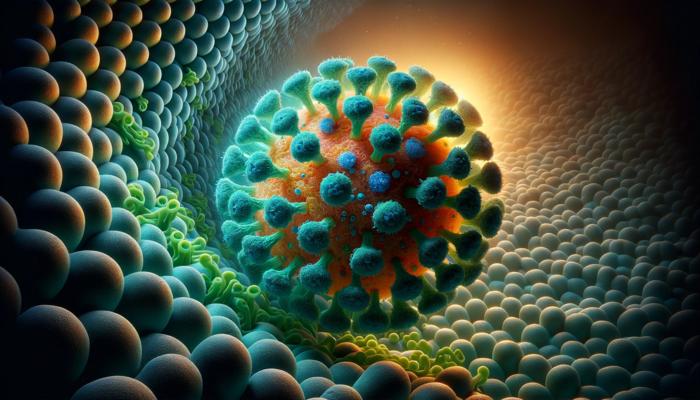A recent groundbreaking study, published in Nature Nanotechnology, sheds new light on the coronavirus’s behavior, particularly its ability to remain attached under various mechanical stresses and the implications for person-to-person transmission. The paper, titled “Single-molecule force stability of the SARS-CoV-2–ACE2 interface in variants-of-concern,” is the result of a collaborative effort led by scientists from Auburn University, Ludwig Maximilian University of Munich, and Utrecht University. This research offers an unprecedented molecular-level understanding of the virus and raises the possibility of future variants combining Omicron’s features with increased attachment stability, potentially leading to higher transmissibility.

Credit: Auburn University Department of Physics
A recent groundbreaking study, published in Nature Nanotechnology, sheds new light on the coronavirus’s behavior, particularly its ability to remain attached under various mechanical stresses and the implications for person-to-person transmission. The paper, titled “Single-molecule force stability of the SARS-CoV-2–ACE2 interface in variants-of-concern,” is the result of a collaborative effort led by scientists from Auburn University, Ludwig Maximilian University of Munich, and Utrecht University. This research offers an unprecedented molecular-level understanding of the virus and raises the possibility of future variants combining Omicron’s features with increased attachment stability, potentially leading to higher transmissibility.
The study focuses on understanding the strength of adhesion of different COVID-19 variants to human cells and the impact of this adhesion on the virus’s spread. A key finding is the Alpha variant’s stronger cell adhesion, which may contribute to its rapid transmission. In contrast, variants like Beta and Gamma, which are adept at evading immune responses, do not exhibit this increased attachment, affecting their spread differently among populations. The researchers suggest that future variants could merge strong attachment properties with other beneficial traits, potentially leading to faster transmission rates.
Significant contributions to this study came from Auburn University’s Computational Biophysics Group, led by Prof. Bernardi. Key members, postdoctoral researchers Dr. Priscila Gomes and Dr. Marcelo Melo, delved into the atomic structure of the SARS-CoV-2 Spike protein and its interaction with human cells’ ACE-2 protein. Their findings reveal that mutations in variants like Alpha, Beta, Gamma, Delta, and Omicron significantly change the virus’s attachment strength to host cells.
Dr. Gomes highlights the importance of understanding how mutations structurally impact the interaction between current and future variants and human proteins. Dr. Melo, meanwhile, developed new methods to analyze extensive molecular dynamics simulations data, offering detailed insights into the specific roles of amino acid residues in the Spike protein’s binding interface.
Dr. Bauer, who initiated this project during his graduate studies at LMU Munich and completed it as a postdoctoral researcher at the University of Washington, led the experimental aspect of the study. His innovative approach in examining the force stability of the virus’s interaction with human cells revealed previously unseen single-molecule patterns.
This study exemplifies the power of international scientific collaboration, involving researchers across three countries. It underscores the vital role of young scientists in advancing research. Prof. Bernardi praises the team’s dedication in developing new analytical tools and novel data correlation methods to understand the molecular details of this protein complex.
The findings also highlight the College of Sciences and Mathematics at Auburn University’s commitment to developing a robust Biophysics Cluster. This initiative, involving the Departments of Physics, Chemistry and Biochemistry, and Biological Sciences, is dedicated to pioneering research that unravels the complexities of biological systems at the molecular level.
Journal
Nature Nanotechnology
DOI
10.1038/s41565-023-01536-7
Method of Research
Experimental study
Subject of Research
People
Article Title
Single-molecule force stability of the SARS-CoV-2–ACE2 interface in variants-of-concern
Article Publication Date
27-Nov-2023



